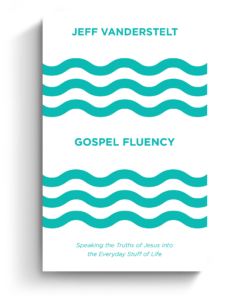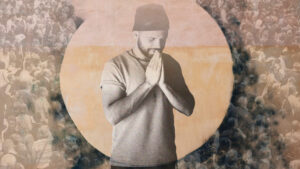Does the Old Testament borrow mythical ideas from Israel’s ancient Near Eastern neighbors? This is a longstanding question. Creation stories are a good test case.
In the creation myths of Israel’s idolatrous neighbors, we sometimes read of conflict at creation, in which one god defeats another and uses the defeated god’s corpse to create the world. For example, the Babylonian text Enuma Elish speaks of the god Marduk like this:
[Marduk] . . . with his unsparing mace he crushed her skull . . .
He split her like a shellfish into two parts:
Half of her he set up and ceiled it as sky . . . (ANET, 31–32)
Some scholars suggest that mythological ideas like these are reflected in Old Testament texts about “Rahab” (different Hebrew spelling from the woman in Joshua 2), texts that are also sprinkled with creation language. Which texts do these scholars have in mind? And are they right?
Who or What Is Rahab?
One example is Psalm 89:9–10:
You rule the raging of the sea;
when its waves rise, you still them.
You crushed Rahab like a carcass;
you scattered your enemies with your mighty arm.
The ensuing verses assert that heaven and earth belong to Yahweh because he “founded” and “created” them (Ps. 89:11–12).
Then there’s Isaiah 51:9–10:
Was it not you who cut Rahab in pieces,
who pierced the dragon?
Was it not you who dried up the sea,
the waters of the great deep,
who made the depths of the sea a way
for the redeemed to pass over?
This passage is also followed by references to creation (Isa. 51:13). (For a parallel passage that speaks of “crushing Leviathan” rather than Rahab, see Psalm 74:13–17.)
These passages raise an obvious question: who or what is Rahab? According to the Brown, Driver, and Briggs lexicon, there are two possibilities: either a mythical sea monster (cf. Ps. 74:13–14) or an emblematic name for Egypt (Isa. 30:7).
Different Backgrounds, Different Worldviews
We have at least two possibilities when interpreting such statements: we can read them against the primary background of Ancient Near Eastern mythology, or we can read them against the primary background of earlier Old Testament Scripture.
If Ancient Near Eastern mythology controls our interpretation, we’ll conclude that biblical authors conceived of Yahweh defeating a mythological monster known as Rahab to overcome chaos and create the world. Conversely, if earlier Scripture sets the parameters, then we’ll want to read these statements in line with the worldview advocated in the Torah of Moses, particularly Genesis and Exodus.
In the biblical worldview, Yahweh has no rivals whom he must defeat, and he needs no material in order to accomplish creation.
And we really are dealing with a fundamental difference of worldviews here. In the biblical worldview, Yahweh has no rivals whom he must defeat, and he needs no material in order to accomplish creation. He simply speaks and it is so (e.g., Gen. 1:3ff.). Conflict is introduced in Genesis 3, when the serpent tempts the man and woman into sin, and when God speaks words of judgment over the serpent in Genesis 3:15. But there’s not a hint of conflict in Genesis 1–2. None whatsoever. We need to remember this before we choose to interpret language about Rahab through the lens of Babylonian creation myths.
To illustrate: phrases like “a woman’s choice” could easily be found in contemporary pro-life literature. But suppose researchers 3,000 years from now were to stumble on this wording. Would they be wise to conclude that this pro-life literature actually championed the pro-choice cause simply because it borrowed some pro-choice phrases? Of course not. Such phrases must be read in the context of the worldview in which the authors were operating.
In the same way, statements about Rahab need to be interpreted with the worldview context in mind. Just because they sound similar to language in Ancient Near Eastern myths doesn’t mean they deliver all the same intellectual freight.
Let Earlier Scripture Interpret Scripture
Here’s my alternative proposal for understanding statements about Rahab (and Leviathan) like the ones cited above from Psalm 89, Psalm 74, and Isaiah 51: we should assume that the biblical authors believed and were informed by the Torah of Moses.
The same community that embraced the Psalms and the Prophets also embraced the Torah of Moses.
Why is this assumption legitimate? Because the same community that embraced the Psalms and the prophets also embraced the Torah of Moses. They measured everything by what the Torah taught and rejected anything that didn’t align with it. Such people knew the difference between the teaching of Genesis and the teaching of, say, Enuma Elish. Is it really likely that the believing old covenant remnant would embrace a psalmist or a prophet whose writings smuggled polytheistic creation-conflict myths into the community?
What happens to our interpretation if we read the Rahab texts cited above from this perspective? Answer: we see features in each of these contexts that point directly to the exodus from Egypt, particularly to the crossing of the Red Sea (Ps. 74:13; 89:10; Isa. 51:10). Rahab is identified with Egypt in Isaiah 30:7 and with the dragon in Isaiah 51:9 (cf. Ps. 74:13–14). Is Egypt being identified as “seed of the serpent” (Gen. 3:15) through the reference to her as a monster from the watery deep? Is the “mythical sea monster” Rahab something like the giant watery snake Leviathan? Could Yahweh’s defeat of Egypt at the exodus be poetically re-presented in Psalm 74, Psalm 89, and Isaiah 51 as a crushing of the serpent’s head?
This interpretation seems far more plausible to me than the idea that the biblical authors were purveyors of the creation-conflict myth. It fits better both with the biblical worldview found in the Torah and with the biblical theology of the whole canon. The idea of creation involving conflict among the gods appears in Ancient Near Eastern mythology, but it is highly unlikely—indeed impossible—that such a concept would’ve been embraced and articulated by a biblical author.
Creation, Redemption, and Head-Crushing
How, then, do we explain the references to creation in these Rahab passages (Ps. 74:16–17; 89:11; Isa. 51:13)? By recognizing that the mighty acts of God in creation and redemption are regularly set side by side in both Old and New Testaments. The God who created the world is the God who saves his people.
Yahweh was “a man of war” against Egypt (Ex. 15:3). Pharaoh stood against him with the cobra on his turban, and Yahweh crushed the head of the serpent and his seed. With his strong hand and outstretched arm, he split the sea and defeated his enemy.
The figurative crushing of the serpent’s head at the exodus from Egypt anticipated the head-crushing that would happen at the place of the skull (Gen. 3:15; Col. 2:14–15).
“The Most Practical and Engaging Book on Christian Living Apart from the Bible”
 “If you’re going to read just one book on Christian living and how the gospel can be applied in your life, let this be your book.”—Elisa dos Santos, Amazon reviewer.
“If you’re going to read just one book on Christian living and how the gospel can be applied in your life, let this be your book.”—Elisa dos Santos, Amazon reviewer.
In this book, seasoned church planter Jeff Vanderstelt argues that you need to become “gospel fluent”—to think about your life through the truth of the gospel and rehearse it to yourself and others.
We’re delighted to offer the Gospel Fluency: Speaking the Truths of Jesus into the Everyday Stuff of Life ebook (Crossway) to you for FREE today. Click this link to get instant access to a resource that will help you apply the gospel more confidently to every area of your life.

































